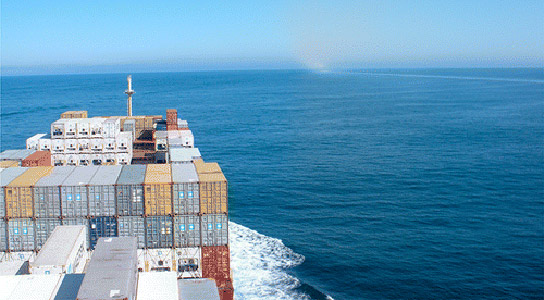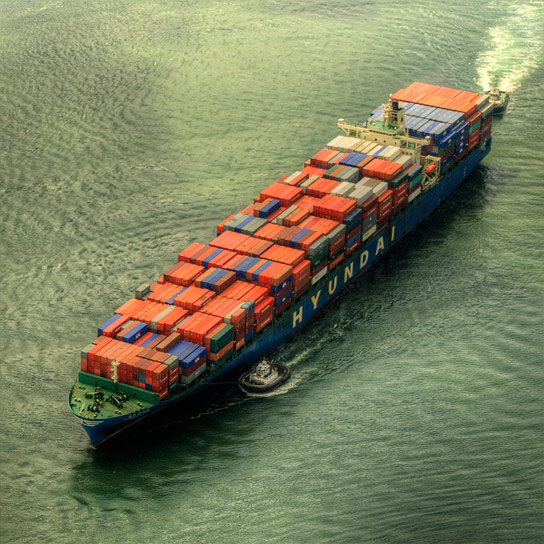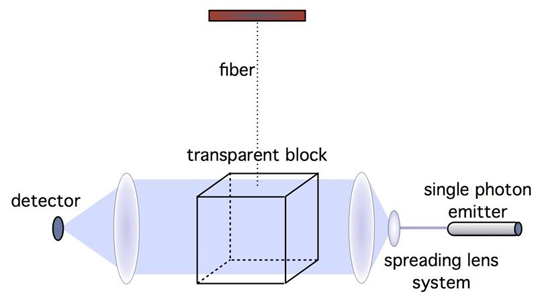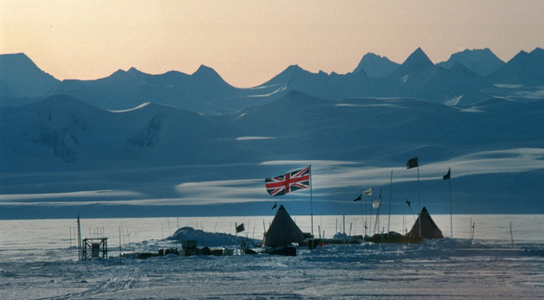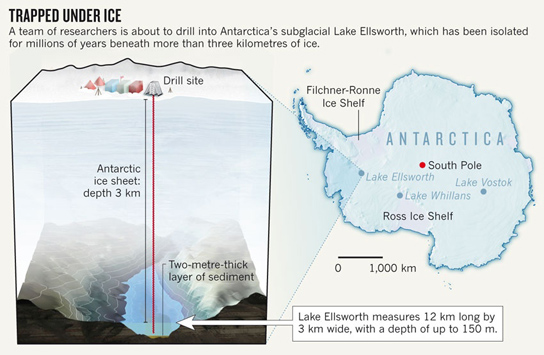High-Speed Video Helps Scientists Understand Hummingbird Pollination
November 25, 2012
Science
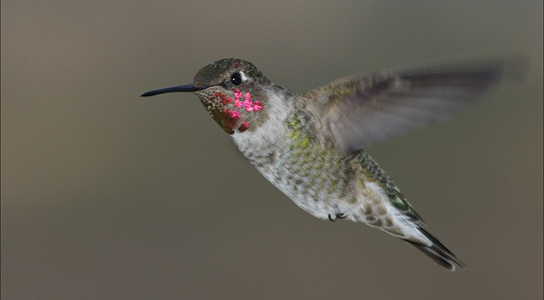
Photo by Scott Streit
Hummingbirds are part of the family Trochilidae and are among the smallest birds on the planet, with most species measuring between 7.5 to 13 cm. Now, a new high-speed video has helped scientists understand why hummingbirds always pollinate flowers that hang upside down.
The scientists published their findings in the journal Functional Ecology. Hummingbirds are native to the Americas, and are one of the only types of birds that can hover while flying. This expends a lot of energy, and as such, they have one of the fastest metabolisms of any animal. While they eat small insects, hummingbirds typically drink the sugar-rich nectar from flowers to gain calories. Many hummingbird species have co-evolved with certain plant species, but it has remained a mystery why they visit flowers that hang upside-down.
In this experiment, biologists fed Anna’s hummingbirds (Calypte anna) from artificial flowers that pointed horizontally, upside-down, or tilted at a 45-degree angle. The flowers were filled with nectar and fitted with a mask to measure how much oxygen the birds were using while hovering. The upside-down flowers required the hummingbirds to tilt their heads back awkwardly, and required 10% more energy to feed than horizontal flowers.
Because it’s more costly energy-wise to drink from such flowers, researchers speculate that the orientation must be beneficial in some other way. They believe that flowers that don’t hang upside-down are possibly more exposed to rain, which would dilute the nectar, and since hummingbirds can taste the sweetness of the nectar, they may avoid flowers that contain less sugar.
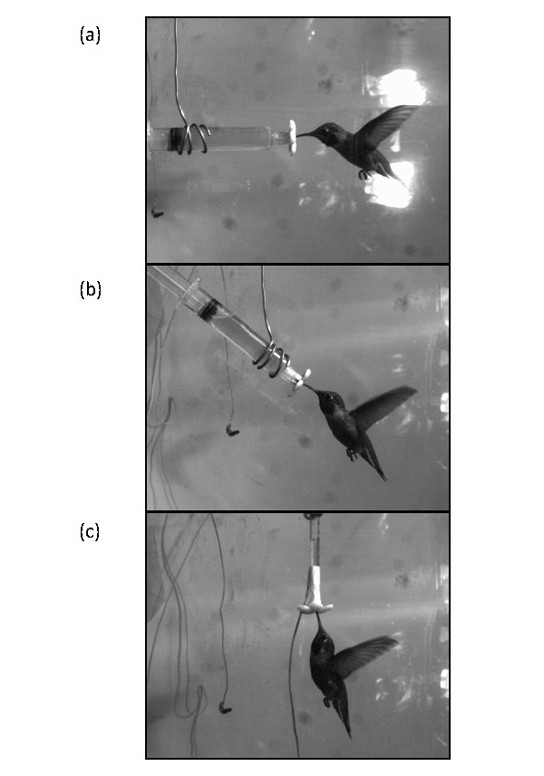
Body posture of an Anna’s Hummingbird when feeding from horizontal (a), tilted (b), and vertical (c) feeders. Credit: Copyright Nir Sapir
